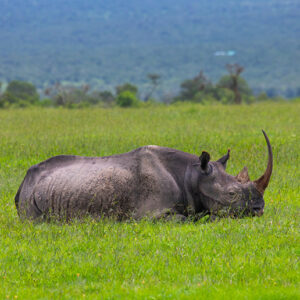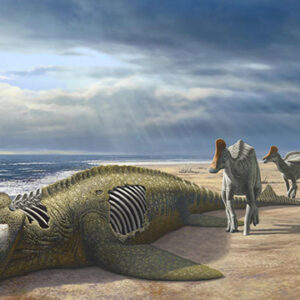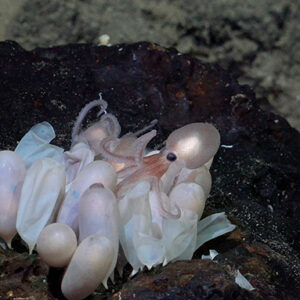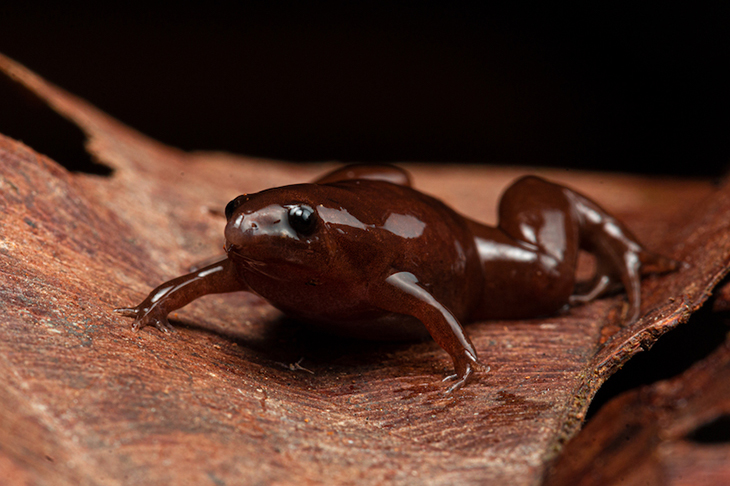
A tiny new species of burrowing frog was discovered in the Amazon by biologists. These burrowing frogs were discovered when the scientists heard its unique “beep” sound. They were described to have a pointy tapir-like nose, while being less than one inch in size, which is around 1 to 2 cm only.
The biologists that discovered the frog have named this new dark brown species Synapturanus danta, since danta is the Spanish word for tapir. A tapir is a herbivorous mammal described to have pig-like features and a trunk that looked a lot like an elephant’s.
Locals in Peru were aware of this tiny, burrowing frog long before because of its ‘beep-beep-beep’ sound that it makes while underground. But it was elusive to biologists until recently upon its discovery.
The local guides in Peru took the research team to peatland areas, which are wetlands that are carpeted with nutrient-rich turf fashioned from decaying plant matter. They also went to search at night because this is when the frogs are known to be much more active.
It took the researchers three nights of searching before they found the frog. They tried to wait for an adult frog to appear out of the dirt, but when that didn’t happen, they decided to dig in the areas where they knew these frogs were usually hiding.
It took them around 20 minutes to dig into the peatlands with their hands before they finally discovered the little brown frog. Once they had one in hand, they managed to give it an official scientific name, as well as a description of the newly discovered reptile.
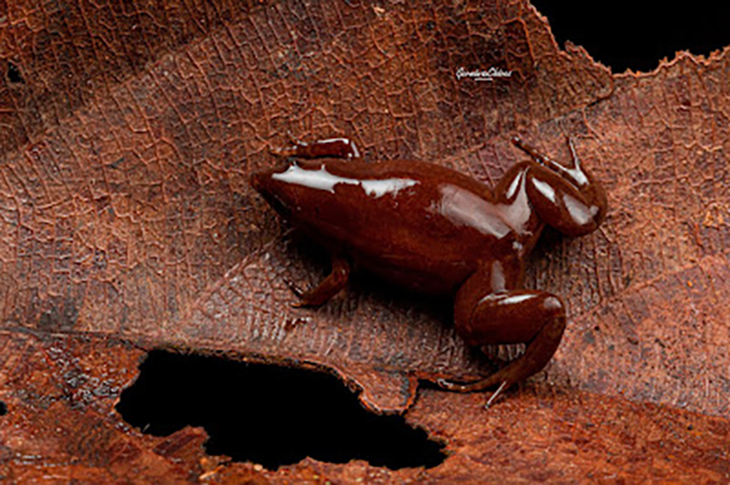
Proof of A Health Ecosystem
The biologists share that the presence of these tiny brown frogs could only mean that the peatlands of Peru’s Putumayo Basin were probably quite healthy, possibly also due to very little deforestation of the area.
A researcher and ecologist at the Field Museum of Nature History, Dr. Michelle Thompson, said, “These frogs are really hard to find, and that leads to them being understudied. It’s an example of the Amazon’s hidden diversity, and it’s important to document it to understand how important the ecosystem functions.”
“It looks like a caricature of a tapir, because it has a big blobby body with this tiny little pointy head. The frogs are tiny, about the size of a quarter, they’re brown, they’re underground, and they’re quick. You know these little frogs are somewhere underground, but you just don’t see them hopping around,” she added.
She continued, “We could hear them underground, going beep-beep-beep, and we’d stop, turn off our lights, and dig around, and then listen for it again. After a few hours, one hopped out of his little burrow, and we were screaming, ‘Somebody grab it.’”
Researcher at Peru’s Institute of Herpetology, Dr. Germán Chávez, explained, “Frogs of this genus are spread throughout the Amazon, but since they live underground and can’t get very far by digging, the ranges each species is distributed in are fairly small. Since we found this new species in Amazon peatland, it wouldn’t be strange for it to be restricted to this environment.”
She also said, “Its body shape and general look seems to be adapted to the soft soil of the peatland, rather than the robust and wider shape of species in other environments. Our genetic analyses show this new species belongs to a group that evolved in the western Amazon, where the influence of prehistoric landscapes like the Pebas Lake might have created different wetlands, which originated the diversity we see in Synapturanus today.”
Moreover, she also said, “Beside the important role of this new species in the food chain of its habitat, we believe that it could be an indicator of healthy peatlands. First, we have to confirm whether it’s restricted to this habitat, but its body adaptations seem to point in that direction.”
“For instance, if the habitat is too dry, the soil would become too hard for a non-robust frog like this one to dig. This would leave our frog with far fewer chances to find a shelter and eventually, it would be hunted by a bigger predator,” she continued.
“So I think the possibilities that this frog would be a wetlands specialist are high, but still need to go further in this research to confirm it.”
You can see the study published in Evolutionary Systematics.
What are your thoughts? Please comment below and share this news!
True Activist / Report a typo
